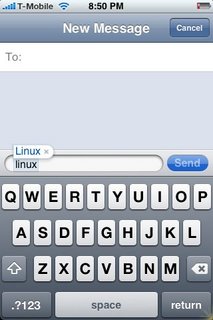One of the biggest complaints a Firefox evangelist encounters is "it doesn’t act or feel like browser X." Internet Explorer users complain that Firefox doesn’t look like what they’re used to. Opera, Safari, and Netscape users complain that it’s missing many of their favorite features. And the social networking gurus point to the powerful social networking features Flock boasts and Firefox lacks. However, all these users overlook one of the most powerful features of Firefox: support for third-party add-ons, which can make emulating the features of other browsers extremely simple.
Category Archives: news
Urbis.com, written completely in Ruby using the open source framework Ruby on Rails, is yet another social networking site, but with a twist: it was created by a writer, for writers. Urbis.com founder Steve Spurgat is not a developer, but he knew right from the start he wanted his Web site to run on open source software. "I’m drawn to the community around it."
openSUSE is one of the most popular free-software-only distributions, and it’s jointly developed by Novell and members of the community. In the first week of November the openSUSE developers released installable live versions of the distro’s latest 10.3 release, one each for KDE and GNOME desktop environments. The live versions are replicas of their install-only cousins in terms of software, and apart from a few quirks, they seem set to replace the older versions soon.
Most people lock their doors and windows, use a paper shredder to protect themselves from identity theft, and install antivirus software on their computers. Yet they routinely surf the Internet without giving a second thought to whether their browser is secure and their personal information safe. Unfortunately, it’s easy for someone with nefarious intentions to use a Web site to glean data from — or introduce spyware to — your computer. Even worse, sometimes all you have to do is randomly click on a site to have your data probed in a most unwelcome way.
The GNOME Foundation has issued a statement in response to recent accusations that it has been supporting the acceptance of Microsoft’s Office Open XML format (OOXML) as an ECMA standard at the expense of the Open Document Format (ODF), the open standard used by OpenOffice.org, KOffice and other free software office applications. However, whether the statement’s attempt at logical rebuttal will do anything to reduce the emotions or altruism behind the criticisms is anybody’s guess.

Yes you read right. it’s possible to install Linux on Gmail. Richard Jones wrote some python that allows you to mount Linux within Gmail. You can use all kinds of Unix commands to communicate with Gmail like ls, rm, grep, cp, etc. it’s an ongoing project in development but it’s very cool and allows you basically a 2gb virtual drive of sorts. You’ll need to have libgmail and FUSE at hand to make it work properly. libgmail communicates with Gmail while FUSE provides the filesystem. Give it a shot, it looks like it’s progressing very nicely.
– Hack A Day
Skype recently released Skype 2.0 beta for Linux, which includes the ability to make video calls, a feature the Windows and Mac versions have had for some time. I tried the beta on two systems running Ubuntu 7.10 — my desktop PC with a USB webcam and a MacBook Pro with its onboard iSight webcam — with mixed results.
Check the following screenshots to understand what I mean. This is whenusing auto-correct built-in an iPhone.



